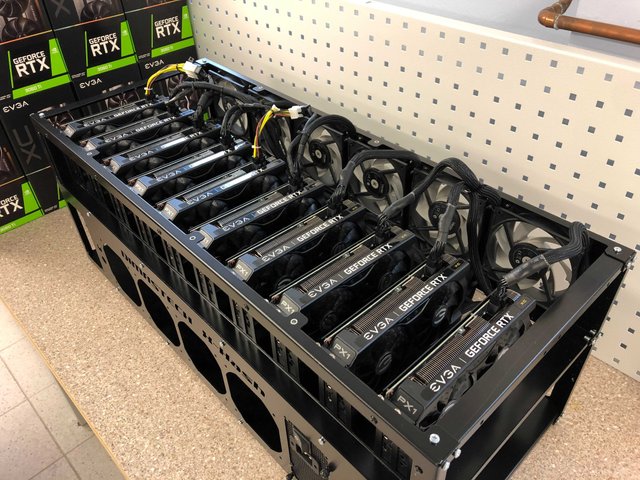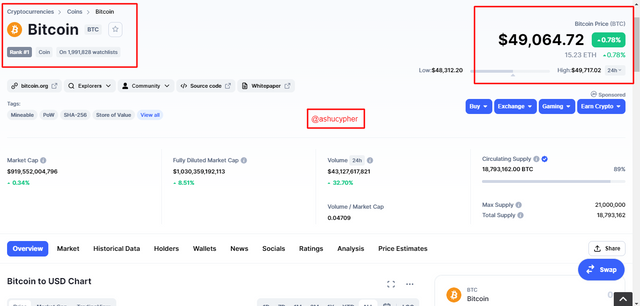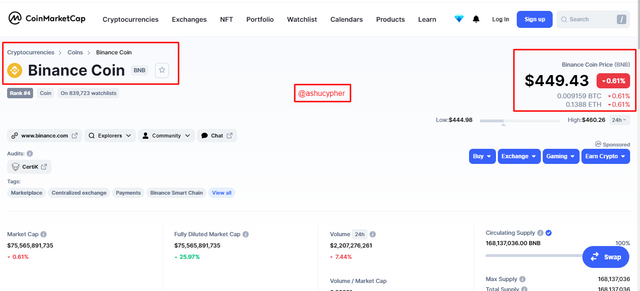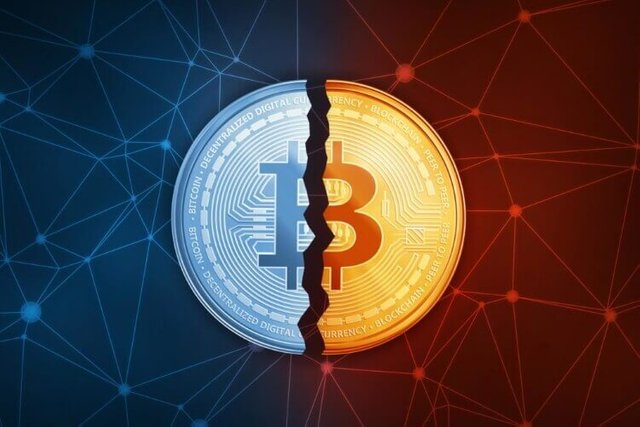Steemit Crypto Academy Season 3 Week 8 - Homework Task for @awesononso | Blockchain Rewards

Image Created by me UsingCanva

Hello everyone, I hope you're all doing fine. The same goes for me.
In this post, I'll be posting a homework task for crypto professor @awesononso.
You can get the basic idea from the Title of this homework that it'll be solely focused on Blockchain rewards. We'll see what blockchain rewards are and how to earn them. We'll see how the mining of the crypto assets is done and the meaning of mining. We'll take Bitcoin as an example and study its HALVING property and the effects of this halving on miners.
I'll explain Blockchain rewards with examples from many Different sources using fully referenced, and markdown images and other various sources present on the internet. In any case of problems and issues, you can also reach out to me in the comment section.

In your own words, explain mining and block reward.

In general terms, mining means the extraction of an asset or a resource from raw materials. As we link this term to a digital asset, the definition will change.
In simple words, Cryptocurrency Mining refers to the extraction or creation of a digital asset using digital means. Cryptocurrencies are the products obtained from these mining processes. In technical terms, mining results in the formation of a crypto asset by solving cryptographic equations. This is done by using computers having very high processing power. The mining process validates data blocks and integrates transaction records to a public ledger, also known as the "Blockchain".
Thus, we can say it is a transaction process in which we use computers with high processing powers to solve complex cryptographic functions. The solved functions or the data is recorded to the blockchain network.
NOTE: The blockchain verifies the data through different verification processes and then post the data on the blockchain network, transparent to the users.
As the blockchains run on decentralized technology, the stored data is transparent to all the users. The users can view any data on the blockchain, but that is limited to viewing only. The data on a blockchain cannot be manipulated.
The question arises - as the platform is decentralized, then who's going to validate the transactions? The answer to that is miners.
Miners ensure that the transactions which are performed on the blockchains are valid. These transactions are grouped together, and a block is created. After verification of the validity, the block is added to the blockchain network with a unique hash. Hashes are the digital addresses of blocks and links blocks to the blockchain.
Blocks have variable capacities. In old times the size of a block was 1Megabyte(MB), then a newly upgraded network named Segwit was introduced, which increased the sizes of these blocks from 1megabyte(MB) to 4 megabytes(MB) in one single segwit block.
As I've explained above, that block has digital addresses called HASH. The process of solving complex cryptographic functions is done to discover the hashes of the blocks. It's very simple to understand that if you have the digital address of a block (i.e. it's Hash), then you'll be awarded to find the block, and you can say that the block is yours or you mined it.


Image Showing Block Hash from Tronscan
- Example of a Block Hash :
0000000001f7ef6358615aca6e1c2c62a1440c06c47afd283b87df1ed7e74c78
BUT, It takes a lot of processing power to discover hashes of the blocks, and obviously, there are hundreds of miners in the market. You should have a faster system that can mine or discover hashes faster from others. That's why miners form large groups of powerful computers by banding them with each other in groups. These are called Rigs.


Image Showing Mining Rig
There are whole rooms and even floors with just these rigs grouped together. Such a large space for mining is called the Mining farms.
When the miner can successfully mine a block, he'll receive some of the mined coins and all fees that the platform will charge a transaction fee happening in the block. The quantity and value of a reward are not fixed as all the crypto-assets do not have the same values. Some give high profits to the miners, and others provide less.
Some of the Rewards that's been given to the Miners for mining different crypto assets are as follows: -
For Bitcoin, the Miner will receive a reward of 6.25 BTC.
For Monero, the miner will receive a reward of 1.16 XMR.
For Ether, the miner will receive a reward of 3 ETH.
for Dogecoin, the miner will receive a reward of 10,000 DOGE.
for Litecoin, the miner will receive a reward of 12.5 LTC.
As you can see, the process of mining is very profitable for Miners as they can earn high amounts of coins, as in the case of Dogecoin. It's a new asset, so discovering a new block takes less time and effort. And the reward amount is huge.


Image Showing Block Reward for TRX
- The current block reward for the TRX token is 176 TRX per block.

What do you understand by the Bitcoin Halving?

It is an event in which the reward for mining 1 Bitcoin is reduced to half. It cuts the inflation Rate in half also as the new Bitcoin have to enter circulation. It's a very big event as it marks drops in Bitcoin's diminishing fixed supply.
Bitcoin halving event takes place after every 210,000 mined blocks. Or we can also say that in every 4 years its reward value reduces to half.
The system of Bitcoin halving will continue until the year 2140. After that, Miners will receive transaction fees paid by the network users as rewards.
It is very important to give rewards to the miners because they're the ones who keep the network going.
The current Bitcoins in circulation are 18,793,018.00 BTC, which leaves only 2,206,982.00 BTC yet to be released through mining rewards. As the total supply of Bitcoin is fixed to 21000000 BTC.
When Bitcoin was launched, the initial reward for mining 1 block was set to 50 BTC. But as the block height reached 210000, the Bitcoin Halving Event happened, and the block rewards were reduced to half, i.e. 25 BTC for every new block.
The first halving event occurred in November 2012, followed by the second event four years later in July 2016 when block height reached 420000, which halved the block reward to 12.5 BTC per block.
After that, the third event occurred in May 2020 when the block height was at 630000, and it again halved the reward to 6.25 BTC per block.

What are the effects of the Halving on miners?

The Bitcoin halving event reduces the rate of creation of new coins, which lower the available supply.
This event is like a chain reaction in which everyone is affected by the change in previous chain members. As the rewards are halved, the inflation will also be reduced to half, which triggers lower available supplies and hence the demand of the asset goes up with the price. The miner receives smaller rewards, but that doesn't mean he's at a loss due to the high price of the Bitcoin.
if the halving will not increase the price of the Bitcoin, then the miner will have smaller rewards. Smaller rewards mean that the rewards for verification of transactions will be small too, and hence the price of the Bitcoin will not increase. In order to avoid this situation, Bitcoin has a function by which the mining difficulty can be controlled. Keeping this in mind, we can say that the effort it takes to mine 1 Bitcoin would be reduced, and the miner can harvest more Bitcoins and earn small rewards in great quantities.

What is the current block height on the Bitcoin blockchain? How many more blocks before the next halving? (Screenshots and Full working)


Image showing current block height from Blockchain.com
From the image above, you can see that the current height of the last mined Bitcoin block is 696899, with a size of around 1,222,742 bytes.
we can also determine the number of halvings by dividing current block height with the constant halving period, i.e. 210000 :
- as it halves its block reward after every 21000 blocks, and the current block height is 696899
then,
no. of halvings = 696899/210000
which is equal to 3.31856667 and 3.319 to 3 s.f.
The result shows that there are already 3 halvings that occurred.
- In order to calculate the 4th halving, we can multiply the constant block height to 4.
210000*4 = 840000
To calculate the remaining blocks, we subtract the current block height from the 4th halving block height.
840000-696899 = 143101
So,143101 blocks are still left to be mined before the 4th halving takes place.

Do you think Steem’s inflation rate reduction can affect other coins? Why?

The Answer to this question is simply, No.
STEEM's inflation reduction will not affect any other coins as it does not hold that much market authority like other coins such as Etherium, Bitcoin, Doge and many others.
However, the case can differ with the assets integrated into the steem or, in simple words, the assets that are also a part of the same STEEM blockchain. Some of these assets are TRON, STEEM DOLLARS (SBD), STEEM power etc. These can show some effects due to STEEM inflation rate reduction.


Image showing STEEM whitepaper
- The image above backups the fact that the assets which are not a part of the steem blockchain will not be affected by any rate reductions.

THE CURRENT BLOCK HEIGHT ON THE STEEM BLOCKCHAIN AND HOW MANY MORE BLOCKS BEFORE THE NEXT 0.01% REDUCTION

For this task, I'm using Steemscan.to view the latest blocks as I've used this platform before and have a very basic understanding of its working and functions.

Image showing Latest STEEM blocks from Steemscan
As you can see from the image above, at the time of creating this homework post, the current block height of stem blockchain is 56,567,687. And we already know that steem blockchain reduces by 0.01% after mining every 250,000 blocks.
The current inflation rate of STEEM is 7.25%.To find the no. of reductions, we need to divide the block number by 250000.
Total no. of reductions = 56,567,687 / 250,000 = 226.27
So, the no of reductions is 226.
- let us find another succeeding value for the next reduction, which will be the 227th reduction.
for 227th reduction, the block height will be = 227 x 250,000 = 56,750,000
- now, calculating the blocks left to achieve the next reduction, we subtract them from the current block height.
Blocks left : 56,750,000 - 56,567,687 = 182313
- so, the blocks left for another reduction to occur will be 182313 blocks.


a.) how many satoshis would you have?
b.) what is the value of a satoshi for that day?
(Show full working and correct to 3 s.f)
(1 satoshi = 0.00000001 BTC)
- The current values of the Bitcoin at the time of making this post are as follows:


Image Showing BTC using coinmarketcap
Price of 1 BTC = $ 49,064.72
- As I've bought Bitcoin worth $2500
conversion of $2500 to BTC
1 BTC = $ 49,064.72
purchased BTC amount = (2500/49,064.72)BTC
= 0.509531085 BTC
= 0.510 BTC(3.s.f)
Finding $ value for 1 satoshi
1 Satoshi = 0.00000001 BTC
1 BTC = $ 49,064.72
1 satoshi = 0.00000001 x 49,064.72
1 satoshi = 0.0004906472
1 satoshi = $ 0.000490 (3.s.f)
$2500 to satoshi conversion
now, if 0.0004906472 is equal to 1 satoshi then,
$2500 = (2500/0.0004906472)satoshi
= 50,095,310.85 satoshis
= 50100000 satoshis(3.e.f)
This implies that if I've purchased $2500 BTC, I would have 50100000 satoshis(3.e.f).
B) The value of 1 satoshi for today is $ 0.0004907 and $ 0.000491 to (3.s.f).the value that I've calculated above is 1 satoshi = $ 0.000490 (3.s.f) .the small difference is due to the time taken to take a screenshot will change the price as the prices of crypto assets are always changing.


Figure showing the value of 1 satoshi from coinmarketcap

a.) how many Jagers would you have?
b.) what is the value of a Jager for that day?
(Show full working and correct to 3 s.f)
(1 jager = 0.00000001 BNB)

- The current values of the Binance coin at the time of making this post are as follows:


Price of 1 BNB = $449.43
- Now, as I've bought $30 BNB, which is equal to :
Value of $30 BNB
1BNB = $ 449.43
$30 = (30/449.43)BNB
= 0.0667512182
= 0.668 (3.s.f)
Value of jager in BNB
1 jager = 0.00000001 BNB
1 BNB = $ 449.43
1 jager = 0.00000001 x 449.43
1 jager = 0.0000044943
1 Jager = 0.00000449 (3.s.f)
$30 in Jager
1 jager = $ 0.0000044943
$30 = (30/0.0000044943)jager
= 6,675,121.82
= 6680000(3.s.f)
It implies that If I bought $30 worth of BNB, I would have 6680000 Jagers in (3.s.f).
B) The Value of Jager for today is 0.00000449 (3.s.f)


Mining is a crucial part of the Cryptocurrency world as it is how the coin itself is created. It stores transaction records and registers them to the blockchain. One needs to know that how the mining process works and how it provides rewards to the miners. I've learned many new terms and processes from this class and want to show my gratitude towards professor @awesonoso.
By correctly evaluating the blockchain rewards system, one can ensure profits from it.
Being able to gather such knowledge, I am truly blessed and wanted to thank professor @awesonoso to deliver such an amazing task.

That'll be all from my side.
Thank you for reading

